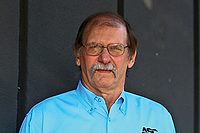Anyone who has read even a few of my previous columns knows I have a cynical streak. I could blame it on my 30 years spent in Washington, D.C., but I suspect I’ve always been a “glass half empty” sort of guy. However, I have now seen that miracles can happen and I have to believe what took place in the Senate with the Toxic Substance Control Act (TSCA) reform bill just before year’s end qualifies.
First, let’s review where we stood in mid-December 2015. Many of the so-called experts were giving Senate passage of the Frank R. Lautenberg Chemical Safety Act for the 21st Century before the end of the year a 0% chance of passage in 2015. That’s right, a 0% chance. Others gave it odds of 50-50 at best in 2016.
Senators Richard Burr and Kelly Ayotte had dug in their heels and demanded that a permanent reauthorization of the expired Land and Water Conservation Act (LWCF) be included as part of the TSCA reform bill or voted on separately before they would let the bill move forward. This standoff was occurring despite the fact that the bill was apparently filibuster-proof, with 60 senators—35 Republicans and 25 Democrats—representing 38 states sponsoring the legislation. In addition, the bill had support from a wide range industries, environmental groups, public health groups, labor unions and former EPA officials. Seldom does any piece of legislation have this kind of broad backing, yet it was stalled for a reason that had absolutely nothing to do with content of the legislation. The situation was a textbook example of why many American voters think our present system of government is broken.
Yet amid the gloom and doom of mid-December, some Senate members still believed that the system could work if a very simple concept was applied: compromise. Sadly, that word has almost become an anachronism in today’s “my-way-or-the-highway” approach to politics and governing. In this case, though, people such as David Vitter, James Inhofe, Tom Udall, Sheldon Whitehouse and Ed Markey were willing to put their formidable ideological differences aside and work out a solution to which all parties could agree.
First, through negotiation of the end-of-the-year omnibus spending package, they were able to include a three-year extension of the LWCF funding that enticed Senator Burr to lift his hold on TSCA reform. Still, this stalwart band of TSCA reformers had another challenge when Senator Barbara Boxer instituted a new hold on the bill unless the House-Senate Conference Committee negotiated within terms she wanted. Again, last-minute horse trading efforts were applied and when the smoke cleared in the waning hours of the session, Senators Inhofe and Udall were able to bring the bill to the floor for quick voice vote.
We have not yet reached the finish line. Early 2016 will see a House-Senate Conference Committee have to work through the differences between the bill passed in December and the House version passed last summer. While both would improve the current TSCA law, each takes a somewhat different approach in accomplishing their goal; how that will play out over the next few months will be interesting to see.
For the ASC and other associations involved in the TSCA reform development for nearly seven years, it is time to concentrate less on the specific provisions of the two bills and more on enthusiastically urging the legislative process forward. Passage of TSCA reform is almost a reality and that’s important. But, maybe just as important is that the process for achieving successful legislation on a very tough subject still can work in a meaningful way when people are willing to talk to each other rather than simply attempt to score political points.
Any views or opinions expressed in this column are those of the author and do not represent those of ASI, its staff, Editorial Advisory Board or BNP Media.


